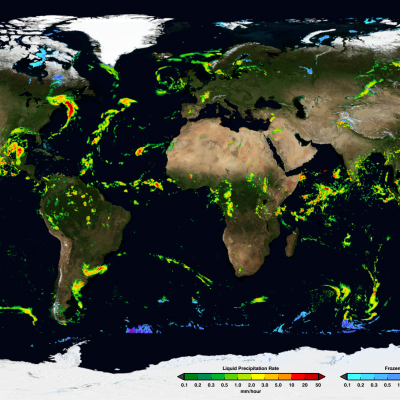Anomalies in TMPA-RT Dec. 18 - 19, 2016
Anomalies in the DMSP F-16 input data for the TMPA-RT created streaks of precipitation over open-ocean regions. We have now deleted faulty data and rerun the TMPA-RT for the period: 18 December 2016 at 09 UTC to 19 December 2016 at 18 UTC. Please re-pull the affected data files. There appears to be no corresponding issue with the IMERG data files due to different quality control routines.


